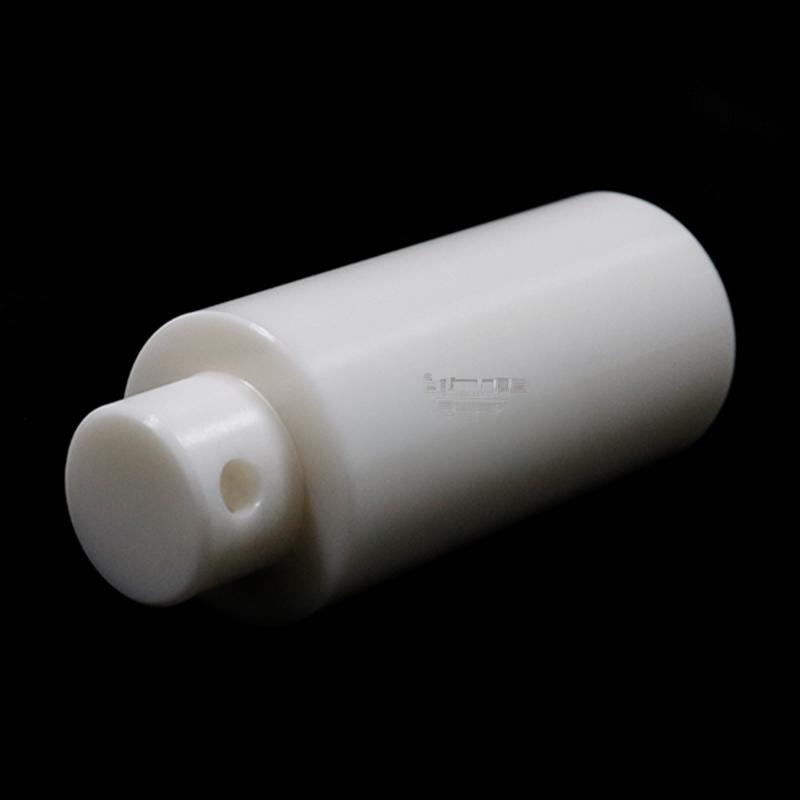The average coefficient of linear expansion of alumina ceramics
Alumina ceramics, as a high-performance engineering ceramic material, are widely used in fields such as electronics, machinery, chemical engineering, and healthcare due to their excellent high temperature resistance, corrosion resistance, high hardness, and good insulation properties. Among them, the average coefficient of linear expansion is a key parameter for measuring the thermal stability of materials, which directly affects the reliability and lifespan of products in temperature changing environments.

What is the average coefficient of linear expansion?
The average linear expansion coefficient refers to the relative value of the length change of a material at a unit temperature change, usually expressed as α and measured in units of × 10 ⁻⁶/° C. For alumina ceramics, the average linear expansion coefficient is usually in the range of 6.0-8.0 × 10 ⁻⁶/° C (temperature range 20-1000 ° C), depending on the purity of alumina (such as 96%, 99%, etc.) and manufacturing process. This characteristic means that alumina ceramics have small size changes in high-temperature environments, can maintain structural stability, and reduce cracks or failures caused by thermal stress.

Product application: The role of alumina ceramics in key fields
The low coefficient of linear expansion of alumina ceramics makes them excellent in high temperature and large temperature difference scenarios. The main applications include:
-Electronics industry: used for integrated circuit substrates, packaging materials, and heat dissipation components to ensure stable connections of electronic devices under temperature fluctuations.
-Mechanical manufacturing: As a high-temperature furnace lining, bearing, and cutting tool, it reduces wear and precision loss caused by thermal expansion.
-Chemical and Energy: Provides corrosion resistance and thermal shock resistance in reactors, pump valves, and fuel cells.
-Medical equipment: used for dental implants and surgical instruments to ensure biocompatibility and long-term reliability.
These applications benefit from the uniform thermal expansion behavior of alumina ceramics, which can effectively match metals or other materials and avoid component failures caused by thermal mismatch.

Product advantage: Why does alumina ceramic stand out?
Alumina ceramics have multiple advantages in terms of average linear expansion coefficient:
-High thermal stability: The low coefficient of expansion ensures minimal dimensional changes in the material within the range of -50 ° C to 1500 ° C, making it suitable for extreme environments.
-Excellent mechanical strength: Combining high hardness and wear resistance to extend product life.
-Good insulation performance: maintains electrical insulation at high temperatures, suitable for high-power electronic devices.
-Cost effectiveness: Compared to other high-end ceramics such as silicon nitride, alumina ceramics have mature preparation processes and high cost-effectiveness.
These advantages make alumina ceramics an ideal choice for solving thermal management problems, especially in industrial applications that require high precision and reliability.

What problems can the product solve?
The low average expansion coefficient of alumina ceramics directly solves multiple industry pain points:
-Thermal stress cracking: In temperature cycling, mismatched material expansion can lead to component cracking, and the uniform expansion of alumina ceramics reduces such risks.
-Dimensional accuracy loss: For precision instruments such as semiconductor manufacturing equipment, alumina ceramics ensure long-term dimensional stability and improve production yield.
-Shortened lifespan: Traditional materials are prone to aging in high-temperature environments, while the heat resistance of alumina ceramics extends the service life of equipment.
-Compatibility issue: Its expansion coefficient can be designed to match the metal, simplifying the design and manufacturing of composite structures.
By solving these problems, alumina ceramics help customers improve product performance and reliability, and reduce maintenance costs.

Customer real case (anonymous)
A global electronics manufacturer is facing the problem of connection failure caused by mismatched expansion between the substrate and metal wires at high temperatures while developing high-frequency circuit substrates. They used our 96% alumina ceramic (with an average linear expansion coefficient of 7.0 × 10 ⁻⁶/° C), and after testing, the product showed stable performance in temperature cycles from -40 ° C to 150 ° C, with a failure rate reduced by 80%. Customer feedback shows that this not only improves equipment reliability, but also shortens the development cycle, achieving an annual cost savings of approximately 15%.

The average coefficient of linear expansion is the core characteristic of alumina ceramics, which directly affects its application value in high-tech fields. Through objective analysis and practical cases, we have demonstrated its outstanding ability in solving thermal management problems. If you encounter challenges in material selection or product design, please feel free to contact us – what problems or challenges have you encountered in the use of your product? Welcome to leave a message and communicate with us!
Brudeze Ceramics supplies and sells a wide range of high-quality quartz glass, including alumina ceramics, zirconia ceramics, silicon nitride ceramics, aluminum nitride ceramics, silicon carbide ceramics, boron carbide ceramics, bioceramics, machinable ceramics, etc. We can meet the customization requirements of various ceramic products.
Tags: boron carbide ceramics
PREVIOUS:What is high alumina ceramic
CATEGORIES
LATEST NEWS
- What is Macor processable g...
- The material properties and...
- The reason for the high pri...
- What are the preparation me...
- Why modify aluminum nitride...
- Thermal conductivity values...
- What is the thermal expansi...
- Thermal shock resistance of...
- The average coefficient of ...
- What is high alumina ceramic
